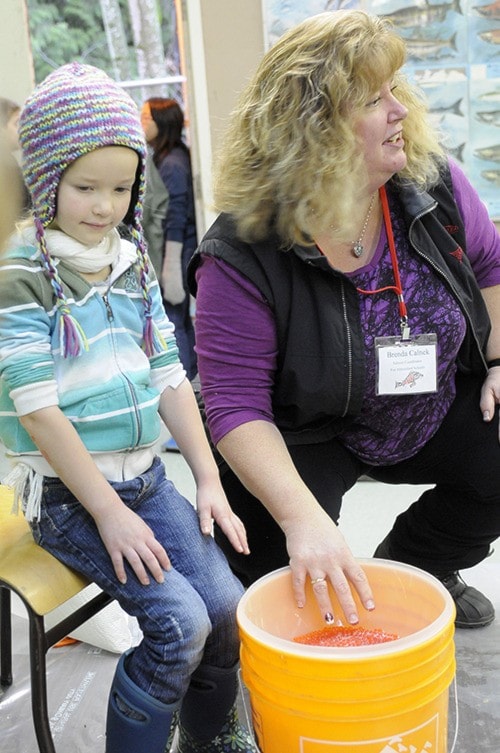The number of salmon in Abbotsford’s streams have dwindled over the years, but Doug Gosling remembers a time when local waters were full of them. Now he surveys local creeks for signs of their return, seeing it as a sign of their ability to thrive against the odds.
“It just amazes me how strong they are, how resilient they are, how determined they are… For some reason, they inspire me.”
Gosling’s love of salmon has led him to volunteer with the Abbotsford Ravine Park Salmon Enhancement Society, which works to release the fish into local streams and educate the community.
The hatchery is a small building owned by the City of Abbotsford, located near the Abbotsford Arts Centre. It has been operating for more than 20 years through the work of volunteers.
Earl Smith, president of the society, said they get live fish from the Chilliwack River to spawn new salmon with the help of local students.
The work of the hatchery is complemented by a program – Salmonids in the Classroom – which helps students gain firsthand understanding of the fish.
Brenda Calnek, a teacher at Prince Charles Elementary School, has been the co-ordinator of the school program for about six years after more than 20 years with a tank in her classroom. Currently, 37 classrooms are participating in Abbotsford.
In December, students participate in the” egg take,” which involves cutting open a female fish to extract the eggs, which are then fertilized with the milt of a male while students learn about reproduction.
Smith said this time around there were about 90,000 eggs, but about 6,000 were dead and removed. Now most of the remainder will mature. However, Smith said that of the fish released into streams, only a low percentage will return when the salmon run comes back.
“Once they hit the wild – anything can happen out there.”
He said that if one or two per cent return they would be doing well, as salmon are prey to many other creatures in the wild.
This month, about 50 of those eggs will be brought to each classroom with incubators and the students are responsible for raising the fish until they can be released into streams in the spring.
Calnek said the kids love releasing the salmon and it provides an opportunity to talk about waterways and how to keep them clean and protect the environment, as well as learning about animals and life cycles.
Students from kindergarten to Grade 8 are involved, and each takes away different lessons from caring for the salmonids.
A weekly survey of the creek is done by Gosling, who checks the water for PH levels and quality. The volunteers often go to Stoney Creek in Abbotsford, counting salmon in the fall and setting traps in the spring to identify and count the salmon that have returned.
Gosling also writes a newsletter sent out to volunteers and community members to raise awareness about salmon and the importance of small streams.
Smith said they receive some funding through Fisheries and Oceans Canada (formerly known as the Department of Fisheries and Oceans), BC Hydro and the school district.
The goal of their work is simple – to ensure there is a sustainable amount of salmon in Abbotsford’s streams.
“Hopefully, one day the fish will return on their own … and there will be fish in the local creeks again.”
The hatchery is looking for volunteers. Those interested can contact Gosling at 604-864-9964 or doug@sourcetotap.com.
